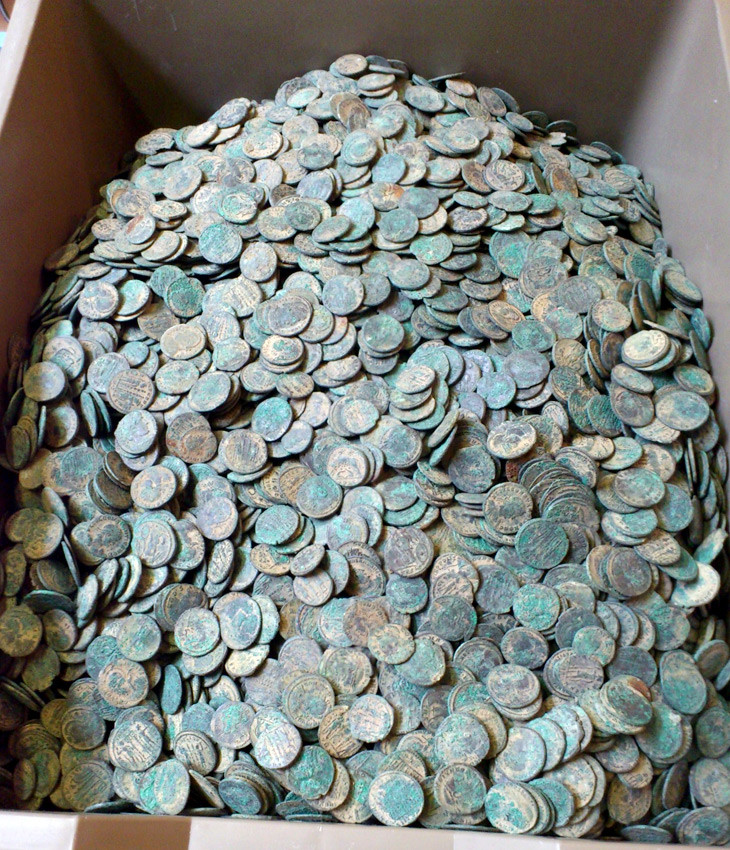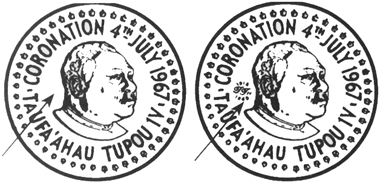What is the meaning of coin?
Coin [lat. moneta, originally one of the epithets of Juno (Juno Moneta), at whose temple in Rome in the 3rd century. BC e. there was a mint], a banknote made of metal (gold, silver, copper and copper alloys; in modern times - various alloys of copper, nickel, aluminum). It is a means of circulation and payment. The oval or round shape of the coin, as the most convenient for circulation, has always been dominant; exceptions are rare. The coin is distinguished between the front (obverse) and the back (reverse) sides and the edge (edge). Each coin has an image (coat of arms, name, title, image of the ruler) and a legend containing the name of the city, state, year of minting, and name of the coin.
Coins appeared almost simultaneously in the Asia Minor state of Lydia (the turn of the 8th-7th centuries BC) and in Ancient Greece - on the island. Aegina (7th century BC). Medieval Europe developed its own coinage in the 9th and 10th centuries. National coins gradually replaced Roman, Byzantine, Arab coins and imitations of them from circulation.
Coins appear with the development of commodity-money relations and trade. Unlike goods that circulated as equivalent (livestock, grain, shells, etc.) and metal ingots, the coin became a universal means of payment, since the quality and weight of the metal in the coin were certified by the state (state stamp).
The issue of coins is the exclusive right of the sovereign power. In feudal Europe, any sovereign feudal lord (even an untitled nobleman) had the right to mint coins; in modern and modern times, national states had the right to mint coins. Violation of coin law has always been considered a grave crime, not only criminal, but also political. The images on the coins (in the early period only on the front side) are the state emblem.
The coins were a mandatory means of payment within the state that issued them. However, some coins circulated far from where they were minted (for example, Roman silver coins outside the empire, Arab Dirhams in the 9th-13th centuries in Eastern Europe).
The fundamentals of coinage are determined by the monetary system adopted in the state: the weight of the coin during minting is legally determined (the legal deviation from the accepted weight is called Remedium), the choice of the metal that is basic for this system, the relative value of coinage metals in relation to each other (ratio), etc. Often, in a slave-owning society and especially in the Middle Ages, coins were damaged (state authorities reduced the weight or fineness of a coin while maintaining its previous nominal value), due to which the rulers who minted the coins enriched themselves.
With the advent of paper money, the role of coins as the main means of payment comes to naught. Coins made of precious metals remain important as treasures. In the 20th century The coin is everywhere a token of change with a conventional rate in relation to paper banknotes. Coins made of gold and silver are rarely issued and do not have serious economic significance. In most cases, these are commemorative (or anniversary) coins.

Coin classification
All coins can be divided into coins for circulation, anniversary, commemorative, collectible and investment.
Circulation coins
Everything is clear with coins for circulation - these are coins whose main purpose is to act as a means of payment. The coins have a fairly simple design and are almost always minted in a huge mintage. They are issued in the usual quality; coins in stamped shine are more difficult to catch from circulation; it is easier to fish them out of the bank, where they come packaged in rolls (Euro coins, US coins and others) or in bank bags (for example, products from domestic mints). But many numismatists don’t need them; for them, the value of a coin is that it has been in circulation.
Commemorative coins
Commemorative coins are coins whose release is timed to coincide with specific anniversary dates. These coins do not always end up in real circulation. The circulation of these coins can be from tens and hundreds of millions to several thousand.
Commemorative coins are also issued in memory of a specific event, but they are not dedicated to the anniversary of this event. These coins can also be put into circulation. Their circulation may also vary. Often, the concept of “Commemorative coin” includes commemorative and commemorative coins.
Collectible coins
Collectible coins are almost always produced in small quantities and are intended specifically for collecting. They can be produced on any theme, and are often minted from precious metals in improved quality or PROOF quality and have a rather complex design. These coins can only come into circulation if someone pays with it in a store, which is almost impossible. An example of collectible coins made of base metals are the Finnish five-euro coins. This also includes annual sets of mints minted in improved quality.
Investment coins
An investment coin is issued exclusively from precious metals and is intended for investing available funds and savings. Usually numismatists are not interested in these coins.
Usually numismatists start their collection with the first three types of coins, then, when the topic begins to be exhausted, collectible coins are used. However, as many numismatists as there are, there are as many approaches to numismatics. The main thing is to clearly determine whether you consider collectible coins to be of interest to your hobby or whether for you they are just coin-like tokens.
Types of coins
The type of coin is the standard design elements of its front and back sides and edge, determined by government regulations. To a particular extent, the concept of type applies to regularly minted coins, which ensure monetary circulation within the country for a long period of time.
Preservation of coins of the same type is an indicator of the stability of the state’s financial system.
In the United States of America, the 1909 one cent ("Lincoln Cent") was minted without change in type until 1958, that is, 49 years in a row.
In 1959, the design of one of the sides of the cents was changed to a new one and they have been minted to this day, that is, for almost half a century.
It is quite natural that over time, coin stamps wear out and are replaced with new ones. As a result, while the type is preserved, slight differences arise in the designs of coins from different years, even those dated from the same year. No one except numismatists pays attention to these little things. It is collectors who find and describe variations of one type of coin.

Left and center - 1913 US 5 cents, but of different types. The left coin, issued in 1913, received the numismatic name “Buffalo on the Hill.” The second, born in the same year, was named by numismatists “Bison on the Line.” The differences between types are not that difficult to spot. The second type, which was released in 1937, is somewhat more difficult to identify. It is called the “Three-legged Bison.” This name will help you notice that the image of the animal's front legs is noticeably different from what we see on the average coin.
The latest variety of the 1937 nickel is highly valued by numismatists. If a coin from the same year with a bison on all fours in excellent condition (XF) is worth no more than $5, a three-legged bison in the same quality will force a collector to fork out at least $200.
Here are two more coins of the Kingdom of Tonga, a state located on the Pacific Islands. There, in July 1967, King Taufaanau Tupu took the throne. In honor of this event, special coins were issued. The following year, 1968, the king celebrated his fiftieth anniversary. No special coin was issued for this occasion. It was just a marking on the coronation ones. They were embossed with the king’s monogram “TTIV” and the dates “1918-1968”.

Coins of Tonga
Coronation and commemorative coins of the Kingdom of Tonga. The arrows indicate the differences between the varieties.

